Rose Pruning Made Easy
|
|
Rose Pruning is Easier Than You Think!
Our tips and tools give you all the basics to make it easy. We tell you when and how. Plus advise you on the best tools to make it safe. And, easy.
Straight from the experts. Including a video.
The Goal of Rose Pruning
We call it the 3 D’s! Remove DEAD, DISEASED or DAMAGED. Remember this when you look at your roses.
Another goal of pruning is to
- Increase air circulation.
- Shape your plant.
- Encourage growth on flowering wood.
You want new, fresh canes. They produce more and healthier roses than older ones.
Tools for Rose Pruning Safety
Take precautions to yourself because thorns are very sharp. Scratches and punctures from them can get infected.
Having the right pruner is a big step toward making it easy.
Rose Pruners that we recommend
There are two types of pruners. Anvil and Bypass pruners. We recommend Bypass.
Anvil pruners are not as sharp and do not make clean cuts.
See examples below.
Bypass Pruner – Our recommendation. Note the curved blades in the illustration below.
What makes them effective is that the two curved blades cross eachother while cutting.
It’s the key to getting a sharp clean cut. Otherwise you risk injuring your plant.
|
|
Anvil Pruner – They are not sharp and will tend to rip the cain. You can see the difference as the blade is flat and flush against the back side.
|
|
Gloves – San Francisco Rose Society, a trusted authority on roses, recommends thick leather gloves to protect you from sharp thorns. For more protection, there is the gauntlet which protects above the wrist. See below.
|
|
Clothes – Should be thick and hard enough to protect you. Long sleeves are a must. SF Rose Society recommends a leather jacket.
About Rose Canes
Cane – It’s the stem of a rose. It grows from the trunk. A young cane is bright, smooth and green or a mahogony color.
See illustration below showing a healthy cane.
|
|
Old or dying canes are wrinkled and gray. See dead gray cane below.
|
|
When and How to Prune Roses
Because of the mild San Francisco Bay Area climate, we recommend pruning roses in February.
Our pruning tips are broken out below by three basic types of roses.
Carpet roses (sometimes called shrub or ground cover roses.)
Climbing roses. And, Floribundas and Grandiflora roses.
The illustration below shows you proper pruning – how to make the cut.
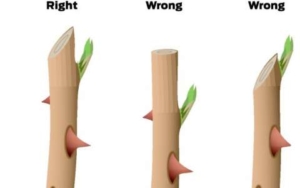 |
Floribunda and Grandiflora Roses
They are the most popular roses in the San Francisco Bay Area and are pruned similarly.
The Master Gardener video posted below is a great tutorial on pruning this type of rose.
See the example below of a Grandiflora rose bush
|
|
- Remove any damaged, diseased, weak or broken canes, until there is only healthy growth.
- Cut back about one fourth to one third of the current year’s growth.
- Cut the center branch from each cluster of branches.
- Cut the remaining ones back to 3-4 undeveloped growth buds.
Important notes
Cut off any stems that are crossing over the center of the bush or crossing over each other.
You want the center opened to allow sun and air circulation.
It should be shaped like a vase.
The Master Gardener video below demonstrates how to prune this type of rose
Carpet Roses
They are also referred to as shrub or ground cover roses. You will see them on many commercial sites in the San Francisco Bay Area.
See photo below
 |
These roses are the least fussy!
Remember the 3 – D’s.
- Cut the bush back to rejuvenate and reinvigorate the plant.
- You will be cutting it back to half its original size or more. Initially, your plant will look like mere stalks when you are done. But, don’t worry.
- Your rose shrub will re-establish itself with healthy new growth.
- Finish by trimming so it has an even shape.
Climbing Roses
These roses like to grow against a arbors, fences or a trellis. They key is to train them to a horizontal position. In the shape of a fan.
See image below
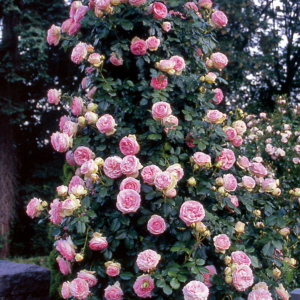 |
These need to be trained because they have long branches can become quite unruly if allowed to grow in a haphazard fashion.
Some key tips about pruning and training them
- Trim off any old, dead, diseased or overcrowded branches.
- If a cane is not climbing in the right direction, just remove it.
- Encourage sidehoots (also called laterals) because they produce the flowers. They should be cut back from two to five buds.
- Train by bendng the dominant canes to fan out horizontally by securing them. They will produce more flowers!
When you are finished
- You don’t have to seal your pruning cuts. They will seal themselves, particularly if they are dormant.
- Remove all remaining leaves. They can harbor pests.
Main Sources for this post
- Master Gardeners – I viewed several different posts by Master Gardeners including the above video from Oregon.
- Nanette Londeree, Master Gardener and Master Rosarian who writes articles about the care of roses.
- San Francisco Rose Society – I used some online information along with their book on roses.
- Paul Swanson, Gardeners’ Guild, Director of Business Development and horticultural expert.



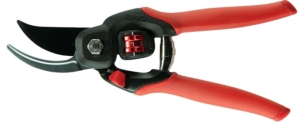
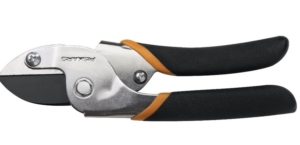
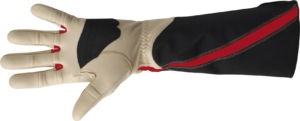
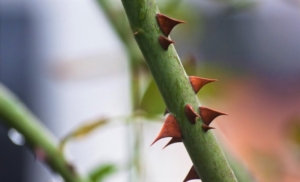
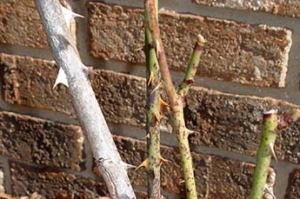
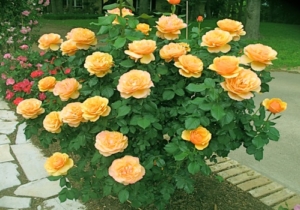


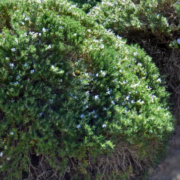


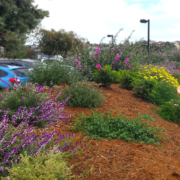
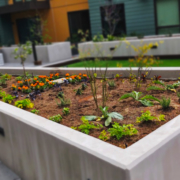

Leave a Reply
Want to join the discussion?Feel free to contribute!